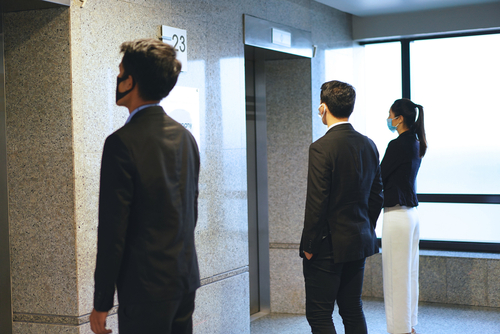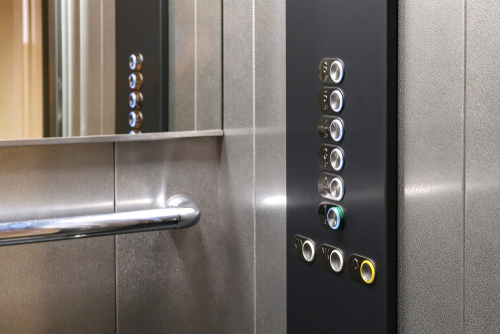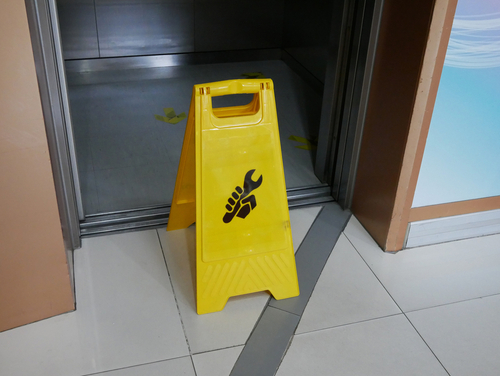
Wheelchair Lift Installation Service in Singapore
March 8, 2022
How To Fix Flickering Lift Lighting?
September 5, 20228 Effective Elevator Safety Tips

8 Effective Elevator Safety Tips For Workers and Riders – According to statistics, the chances of sustaining fatal injuries when involved in an elevator accident is 1 in a million. Despite the odds, many people still sustain life quality lowering elevator-related injuries.
This makes it essential that at least everyone gets to know a thing or two about elevator safety tips, even if your home doesn’t have a building with an elevator installed in it. So, whether you are a worker or a rider and looking for easy and practical elevator safety tips, read on as we have you covered through this article. Read on – 8 Effective Elevator Safety Tips
Elevator safety tips for workers and riders

Below are some of the most practical elevator safety tips for workers and riders of all ages and gender;
#1. Always stand on the right side of the elevator’s door
If it’s possible, always stand on the right side of the elevator’s door. This creates enough space for people who are exiting the elevator, thus reducing the risk of bumping or knocking on each other, which potentially may lead to an elevator-related injury or accident.
#2. Never attempt to stop a closing elevator door or try to get in when it’s closing
It can be pretty tempting to try and stop or get in a closing elevator door if we are to emulate what we see in soap operas and advertisements. But please don’t! Please note that most elevators open and close for around 3-20 seconds, which is a time frame that most of us can’t beat, especially if we have luggage.
If the elevator door closes before you get in, just wait for the other elevator car or preferably, you can use the stairs and catch it on the other floor (that’s if you are fast enough or you are in a hurry).
#3. Always stand close to the walls and at the corners with your hands on the elevator’s handrails

When boarding an elevator, make sure that you stand close to the walls and at the corner. If you find that all the corners are filled up, then you can stand in the middle. For stability and support, make sure that you firmly grip a handrail.
Extra tip: To stay safe and avoid creating traffic or jam while on board, please make sure that you don’t stand in the middle if you are to exit on the highest floor. But this doesn’t mean that you squeeze yourself into a corner if the car is full; it’s always a smart move to wait for the next car.
#4. Never wait for or push anyone behind or in front of you when exiting the elevator
Unless you are with young kids who cannot safely exit an elevator, never wait for anyone when planning to exit an elevator. And in case you have kids around, hold their hands and let them know when you are about to exit so that they may be ready to do so. It will help if you pre-train them on how to board and exit an elevator before doing it.
Even if you are in a hurry, never push anyone who is in front or behind you just because you feel that they are blocking you from exiting. To avoid such scenarios, it’s not only polite but also ethical that you notify the person in front of you on which floor you are bound to exit. This gives the individual(s) time to know how to create space or room for you to exit when you reach your preferred floor.
#5. Know what to do in case an elevator stops working/running

Power outage is the most common reason that may cause an elevator to stop working or running. And in case this happens while you are aboard, please do the following to stay safe;
- Stay calm; you can do this by taking in deep breaths, closing your eyes, changing your focus to something that you like doing or listening to music
- Press the Help or Call button, which is symbolized by the letter A
- Do NOT try to climb out of the elevator
- Do NOT try to open the door
- Patiently wait for help from the qualified staff
#6. Regular and routine inspection, repair, and maintenance of elevators
It’s paramount that regular inspection, repair, and maintenance of elevator(s) be performed routinely by qualified and expert technicians. This helps to prevent, reduce and halt any risk that may cause harm to both the workers using an elevator, either in a commercial or a privately owned building.
#7. Use of quality fall protection gear when working in or near elevator shafts
To minimize the risks that come with working in or near elevator shafts, workers must be provided with quality fall protection gears.
#8. Use of clearly outlined safety and warning signs

The use of clearly outlined safety and warning signs is another elevator safety tip that has shown to be effective when it comes to reducing and preventing elevator-related accidents and injuries among workers and riders. Below are some of the most commonly used elevator safety signs;
- Maximum elevator occupancy limit
- Social distancing signs
- An elevator is out of order or not functioning
- An elevator that’s for freight only and not for passengers
For maximal impact and positive results, always ensure that you place safety and warning signs at both entry and exit points of an elevator. Suppose you have a lot of people using an elevator in your building. In that case, you should have personnel who addresses the riders and workers by use of an audible public address system on the dos and don’ts while in an elevator.
8 Effective Elevator Safety Tips – Key takeaway

As an elevator rider, safely enjoy the convenience an elevator has to offer you by following these simple safety tips which are; Always stand on the right side of the elevator’s door, don’t attempt to stop a closing elevator door, and never wait for or push anyone when exiting an elevator, and know what to do when an elevator stops working while you are on board.
All workers should make an effort and use regularly and routinely inspected, repaired, and maintained elevators, put on standard fall protection gears when working in or near elevator shafts, and clearly understand and display elevator safety and warning signs.




